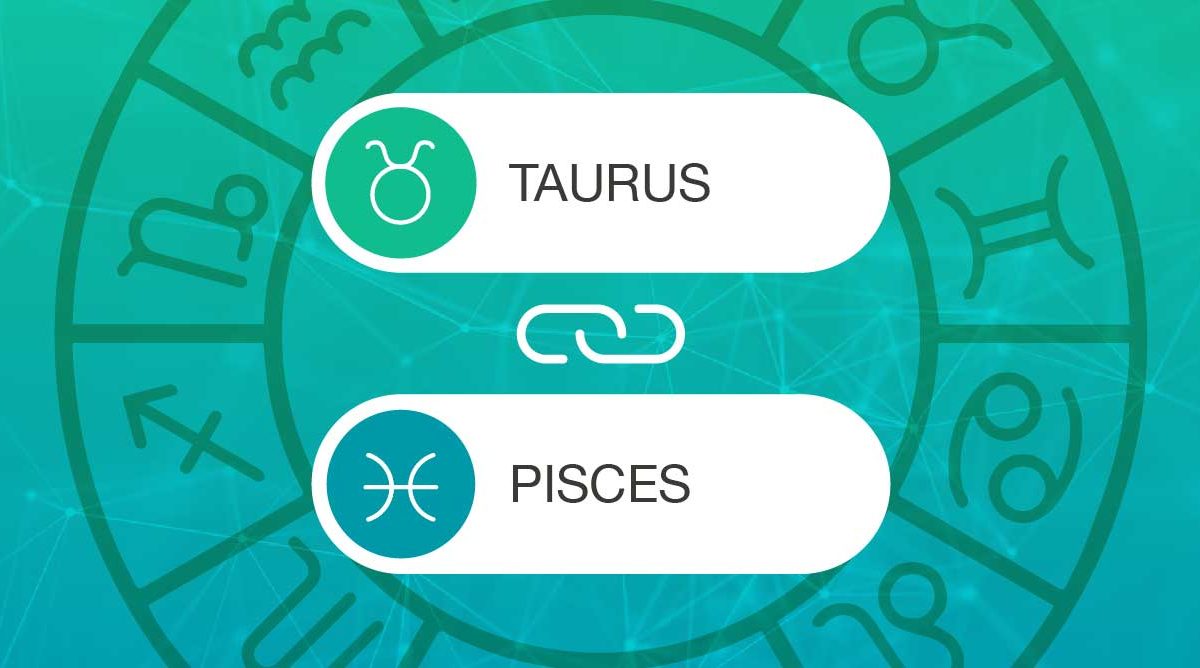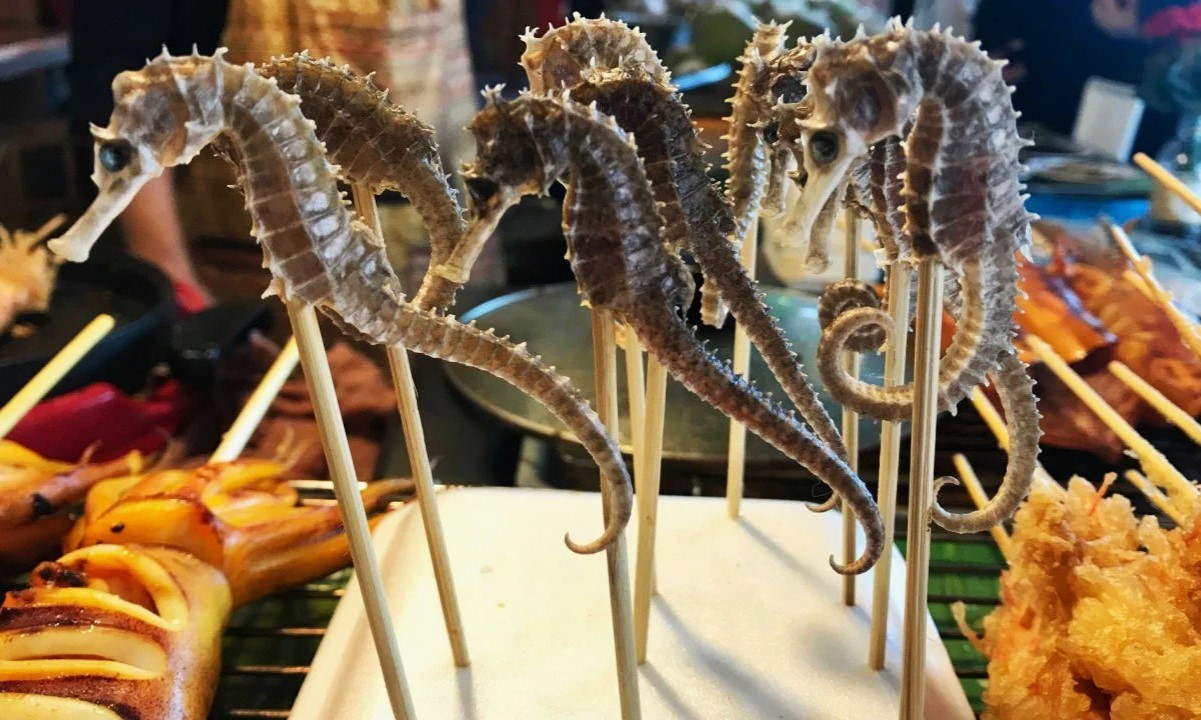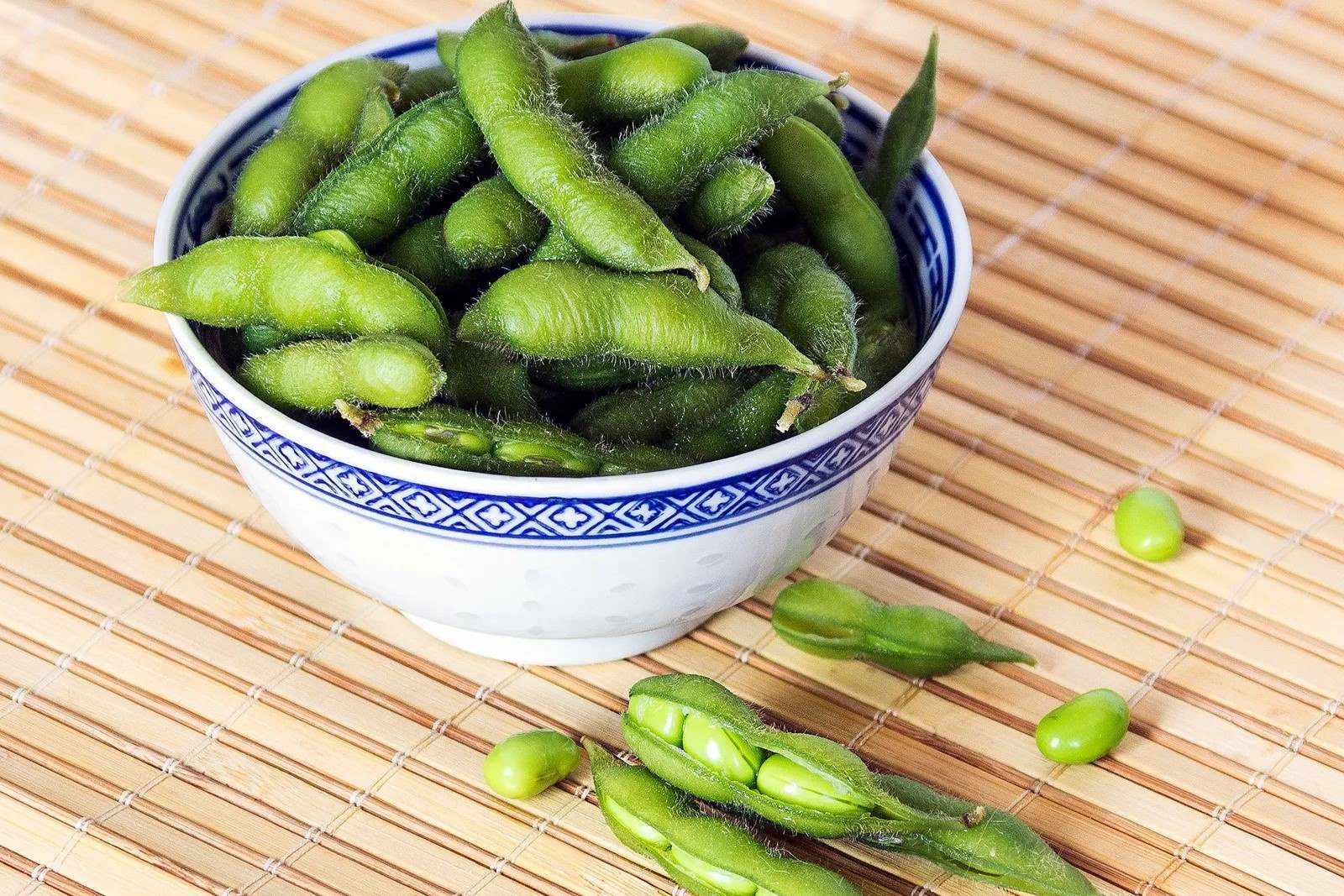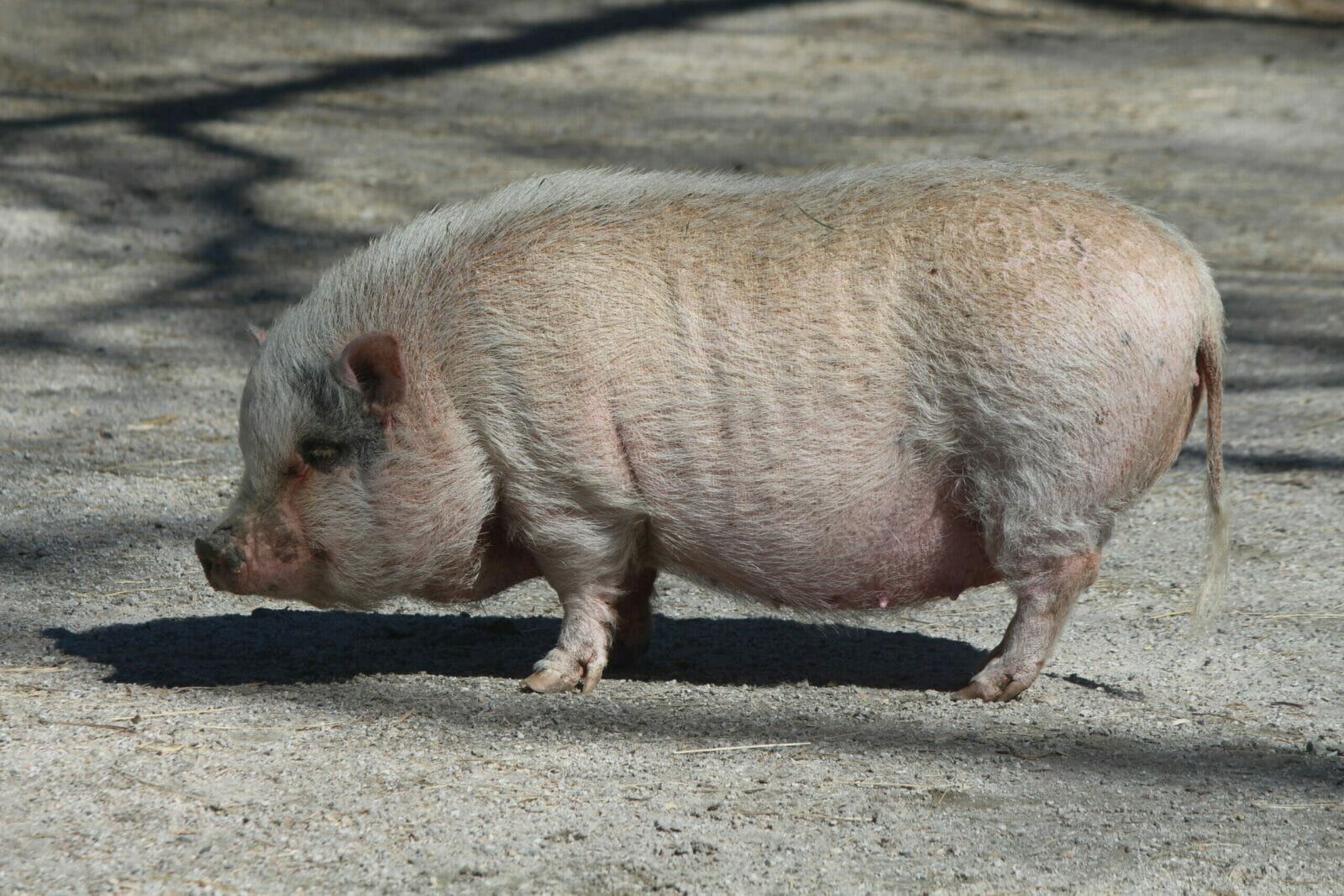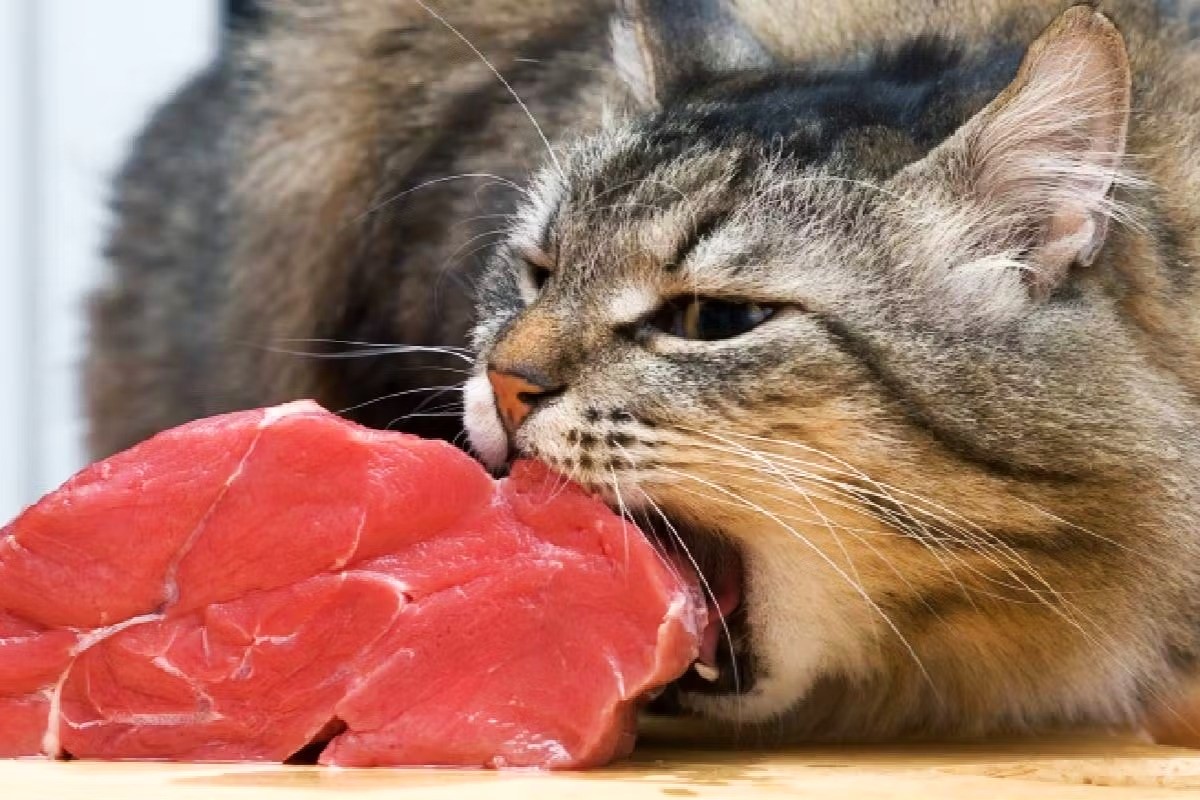Home>Pets & Animals>Surprising Animals That Love Eating Seaweed
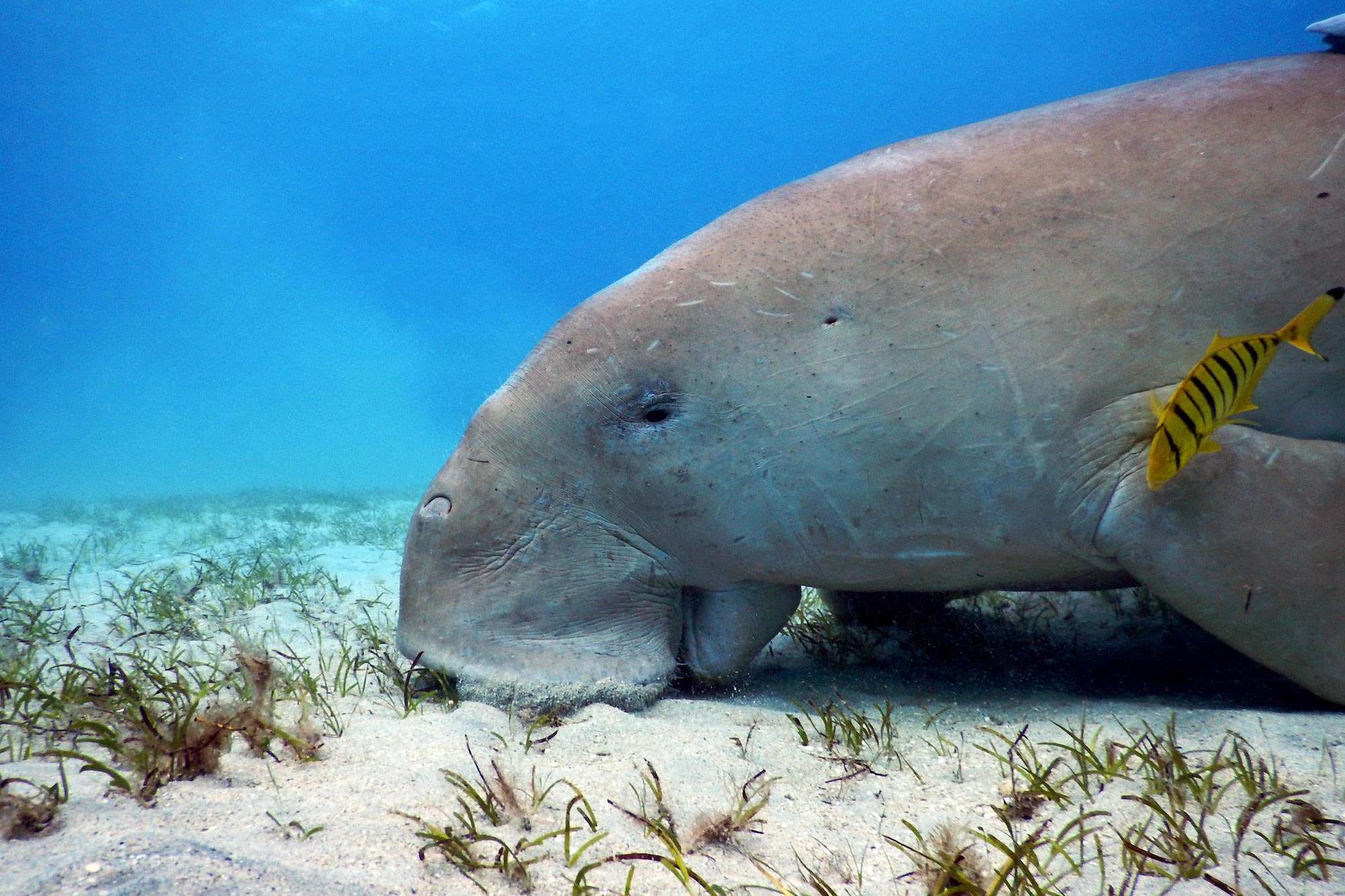

Pets & Animals
Surprising Animals That Love Eating Seaweed
Published: January 27, 2024
Discover the unexpected pets and animals that enjoy munching on seaweed. Learn about their unique dietary habits and the benefits of seaweed consumption. Explore the surprising world of seaweed-loving creatures!
(Many of the links in this article redirect to a specific reviewed product. Your purchase of these products through affiliate links helps to generate commission for Noodls.com, at no extra cost. Learn more)
Table of Contents
Introduction
When we think of animals and their diets, the image of lions hunting zebras or birds scavenging for worms often comes to mind. However, the natural world is full of surprises, and one of the most unexpected dietary preferences is the consumption of seaweed by various animals. Seaweed, a type of marine algae, is not only a staple in many Asian cuisines but also a favored food source for a variety of animals, including fish, sea turtles, marine iguanas, and sea otters.
In this article, we will delve into the fascinating world of animals that have developed a taste for seaweed. From the benefits of seaweed consumption to the specific animals that rely on it for sustenance, we will explore the intricate relationship between these creatures and the marine environment. Join us as we uncover the surprising and diverse array of animals that have incorporated seaweed into their diets, shedding light on the lesser-known culinary habits of the animal kingdom.
The Benefits of Seaweed
Seaweed, also known as marine algae, is a nutrient-rich marine plant that offers a myriad of benefits to the animals that consume it. This underwater superfood is packed with essential vitamins, minerals, and antioxidants, making it a valuable source of nutrition for various marine creatures. One of the key advantages of seaweed consumption is its high iodine content, which is crucial for maintaining proper thyroid function in animals. Additionally, seaweed is rich in vitamins A, C, and E, as well as a range of B vitamins, all of which contribute to the overall health and well-being of the animals that consume it.
Moreover, seaweed is a significant source of essential minerals such as calcium, magnesium, and potassium, which are vital for bone strength, muscle function, and overall physiological balance. The presence of omega-3 fatty acids in certain types of seaweed further enhances its nutritional value, offering anti-inflammatory and heart-healthy benefits to the animals that include it in their diets.
In addition to its nutritional content, seaweed also serves as a natural source of dietary fiber, aiding in digestion and promoting gut health in animals. This fiber content can be particularly beneficial for herbivorous animals that rely on seaweed as a primary food source, as it supports their digestive processes and overall metabolic function.
Furthermore, the bioactive compounds found in seaweed, such as phlorotannins and fucoidans, possess antioxidant and anti-inflammatory properties, contributing to the animals' immune system support and overall disease resistance. These bioactive compounds not only benefit the animals that consume seaweed but also have the potential to positively impact the marine ecosystem by promoting the health of marine organisms at various trophic levels.
Overall, the benefits of seaweed consumption extend beyond mere sustenance, playing a crucial role in the overall health, vitality, and ecological balance of the animals that have evolved to include this marine superfood in their diets. As we explore the specific animals that have developed a penchant for seaweed, the significance of these benefits will become even more apparent, shedding light on the remarkable adaptations and dietary preferences of diverse marine species.
Herbivorous Fish
Herbivorous fish play a vital role in marine ecosystems, and their dietary reliance on seaweed has garnered attention from marine biologists and conservationists alike. These fish, which encompass a diverse array of species including surgeonfish, parrotfish, and rabbitfish, have evolved to thrive on a diet primarily composed of algae and seaweed. Their specialized digestive systems and unique feeding behaviors enable them to efficiently process and derive nourishment from the nutrient-rich marine plants that form the foundation of their diets.
One of the most iconic herbivorous fish species is the parrotfish, known for its vibrant colors and distinctive beak-like mouth structure. Parrotfish are renowned for their pivotal role in maintaining the health of coral reefs, as they graze on algae that can otherwise outcompete and smother coral formations. By consuming copious amounts of seaweed, parrotfish help to prevent the overgrowth of algae, thereby preserving the delicate balance of reef ecosystems and promoting the growth and resilience of coral colonies.
Surgeonfish, another prominent herbivorous fish group, are characterized by their striking colors and the presence of sharp spines near their tails. These fish are adept seaweed grazers, using their specialized mouthparts to rasp and consume algae from the surfaces of rocks and coral. Their feeding activities not only contribute to the regulation of algae populations but also play a crucial role in nutrient cycling within the marine environment, influencing the availability of resources for various organisms within the ecosystem.
Rabbitfish, named for their rabbit-like appearance and grazing habits, are also prominent consumers of seaweed. These fish are known for their adaptability to a variety of seaweed species, demonstrating a remarkable capacity to utilize different types of marine algae as a primary food source. Their consumption of seaweed not only sustains their own nutritional needs but also contributes to the shaping of benthic communities and the overall health of marine habitats.
The dietary preferences of herbivorous fish underscore the interconnectedness of marine ecosystems and the intricate relationships between species. By consuming seaweed, these fish not only obtain essential nutrients for their own well-being but also play a crucial role in maintaining the ecological balance of coastal and reef environments. As we continue to unravel the complexities of marine food webs, the significance of herbivorous fish and their reliance on seaweed serves as a testament to the remarkable adaptations and interdependencies that characterize life in the world's oceans.
Sea Turtles
Sea turtles are revered inhabitants of the world's oceans, known for their graceful movements and ancient lineage. While these majestic creatures are primarily associated with a diet of marine plants and invertebrates, their affinity for seaweed has captured the interest of marine biologists and conservationists. Sea turtles, including species such as green turtles, loggerhead turtles, and hawksbill turtles, have demonstrated a remarkable proclivity for consuming various types of seaweed, integrating this marine plant into their dietary repertoire.
Green turtles, named for the color of their fat rather than their external appearance, are renowned for their herbivorous tendencies, with a significant portion of their diet consisting of marine algae and seagrasses. These gentle giants of the sea display a particular fondness for certain species of seaweed, such as red algae and sea lettuce, which thrive in the coastal and nearshore habitats that green turtles frequent. Their adeptness at foraging for seaweed in shallow waters and coastal areas underscores the importance of these marine plants in the diet and nutritional well-being of green turtles.
Loggerhead turtles, known for their robust heads and powerful jaws, also exhibit a penchant for seaweed, complementing their omnivorous diet with the consumption of various algae species. These resilient marine reptiles, which inhabit a wide range of oceanic environments, have been observed feeding on floating mats of seaweed, utilizing these drifting marine plants as a valuable food source. The inclusion of seaweed in the diet of loggerhead turtles reflects their adaptability and resourcefulness in obtaining sustenance from diverse marine ecosystems.
Hawksbill turtles, distinguished by their striking beak-like mouths and intricately patterned shells, are another sea turtle species known to incorporate seaweed into their diets. While hawksbill turtles are primarily spongivorous, feeding on marine sponges, they also demonstrate a proclivity for consuming certain types of seaweed, particularly those found in reef environments. Their selective feeding habits, which encompass the consumption of specific seaweed species, highlight the nuanced dietary preferences of these enigmatic creatures and the role of seaweed in their overall nutritional intake.
The inclusion of seaweed in the diets of sea turtles underscores the significance of marine algae in supporting the health and vitality of these iconic marine species. As we unravel the complexities of marine ecosystems and the interconnectedness of marine life, the dietary reliance of sea turtles on seaweed serves as a testament to the diverse and intricate relationships that shape the underwater world. By embracing the nutritional benefits of seaweed, sea turtles exemplify the remarkable adaptations and dietary flexibility that contribute to their survival and ecological significance in the world's oceans.
Marine Iguanas
Marine iguanas, endemic to the Galápagos Islands, are a unique and fascinating example of reptilian adaptation to marine environments. These remarkable creatures have evolved to thrive in harsh coastal conditions, where they rely on a diet that includes a surprising staple: seaweed. Unlike their terrestrial counterparts, marine iguanas have developed specialized physiological and behavioral traits that enable them to forage for and consume marine algae, making them one of the few lizard species with a predominantly marine-based diet.
The dietary habits of marine iguanas are intrinsically linked to the availability of seaweed in their coastal habitats. These resilient reptiles, characterized by their dark coloration and distinctive flattened snouts, are adept at diving into the coastal waters to access submerged algae beds, where they graze on a variety of seaweed species. Their unique ability to withstand the challenges of marine life, including saltwater ingestion and thermoregulation in a coastal environment, sets them apart as an exceptional example of evolutionary adaptation to a marine diet.
The consumption of seaweed plays a pivotal role in the nutritional intake and energy balance of marine iguanas. The marine algae they consume, which includes species such as red and green macroalgae, provides essential nutrients, including vitamins, minerals, and dietary fiber. These nutrients are crucial for sustaining the metabolic demands of marine iguanas, particularly as they navigate the energy-intensive processes of thermoregulation and salt excretion inherent to their coastal lifestyle.
Furthermore, the dietary reliance of marine iguanas on seaweed underscores their ecological significance as herbivores in coastal ecosystems. By consuming seaweed, these unique reptiles contribute to the regulation of algal populations and nutrient cycling in their habitats, influencing the overall balance and resilience of coastal food webs. Their foraging activities also play a role in shaping the distribution and diversity of marine algae, highlighting the interconnected relationships between marine iguanas and the seaweed that sustains them.
As we delve into the world of marine iguanas and their unexpected affinity for seaweed, we gain insight into the remarkable adaptations and ecological roles of these enigmatic reptiles. Their dietary reliance on marine algae not only reflects their specialized niche in coastal ecosystems but also serves as a testament to the diverse and intricate relationships that characterize life in the unique marine environments they call home.
This section provides a detailed exploration of marine iguanas and their dietary habits, shedding light on the remarkable adaptations and ecological significance of these fascinating reptiles in the context of their coastal habitats.
Sea Otters
Sea otters, often regarded as the endearing architects of coastal ecosystems, boast a dietary preference that sets them apart from their marine counterparts: a fondness for seaweed. These charismatic marine mammals, known for their playful demeanor and dexterous aquatic abilities, have garnered attention for their unique foraging behavior, which includes the consumption of various species of marine algae.
The inclusion of seaweed in the diet of sea otters is a testament to their remarkable dietary flexibility and the diverse array of food sources available in their coastal habitats. While sea otters are renowned for their expertise in hunting and consuming a variety of marine invertebrates, such as clams, crabs, and sea urchins, their culinary repertoire extends to include seaweed as a supplemental food source.
The consumption of seaweed by sea otters is particularly prominent in nearshore and kelp forest environments, where these marine mammals navigate the underwater terrain in search of sustenance. Kelp, a type of large brown algae that forms dense underwater forests, serves as a vital component of the sea otters' diet, providing them with essential nutrients and dietary diversity. Sea otters have been observed engaging in intricate foraging behaviors to access and consume kelp, showcasing their adaptability and resourcefulness in utilizing marine algae as a nutritional resource.
The nutritional benefits of seaweed consumption for sea otters are significant, as marine algae offer a rich source of essential vitamins, minerals, and dietary fiber. The diverse array of seaweed species available in coastal ecosystems provides sea otters with a supplemental source of nutrition, complementing their primary diet of marine invertebrates. Additionally, the inclusion of seaweed in their diet underscores the adaptability of sea otters to exploit a wide range of marine resources, reflecting their role as keystone species in coastal food webs.
Furthermore, the dietary reliance of sea otters on seaweed contributes to the ecological dynamics of kelp forest ecosystems, as their foraging activities influence the abundance and distribution of marine algae. By regulating the populations of herbivorous invertebrates that graze on kelp, sea otters indirectly support the health and stability of kelp forests, highlighting the intricate relationships between marine mammals and the seaweed that forms an integral part of their coastal habitats.
In summary, the dietary inclusion of seaweed in the culinary repertoire of sea otters exemplifies their adaptability and ecological significance in coastal ecosystems. As we continue to explore the complex interactions between marine organisms and their environments, the dietary preferences of sea otters serve as a compelling example of the diverse and dynamic relationships that shape life in the world's oceans.
Conclusion
The exploration of animals that have developed a taste for seaweed has provided a captivating glimpse into the diverse and surprising dietary habits of marine creatures. From herbivorous fish to sea turtles, marine iguanas, and sea otters, the affinity for seaweed among these animals underscores the intricate relationships between marine organisms and the marine environment. The consumption of seaweed by these diverse species not only reflects their adaptability and resourcefulness but also plays a pivotal role in shaping coastal and marine ecosystems.
Seaweed, as a nutrient-rich marine plant, offers a myriad of benefits to the animals that consume it. From essential vitamins and minerals to dietary fiber and bioactive compounds, seaweed serves as a valuable source of nutrition for a wide range of marine creatures. The high iodine content, omega-3 fatty acids, and antioxidant properties of seaweed contribute to the overall health and well-being of the animals that have evolved to include it in their diets.
The dietary reliance on seaweed by herbivorous fish, such as parrotfish, surgeonfish, and rabbitfish, highlights the interconnectedness of marine food webs and the pivotal role of these fish in maintaining the ecological balance of reef environments. Similarly, the inclusion of seaweed in the diets of sea turtles, including green turtles, loggerhead turtles, and hawksbill turtles, underscores the significance of marine algae in supporting the health and vitality of these iconic marine species.
The unique dietary habits of marine iguanas, which have evolved to thrive on a predominantly marine-based diet that includes seaweed, exemplify the remarkable adaptations of these reptiles to coastal environments. Their foraging activities and consumption of seaweed contribute to the regulation of algal populations and nutrient cycling in their habitats, shaping the distribution and diversity of marine algae.
Furthermore, the dietary inclusion of seaweed in the culinary repertoire of sea otters showcases their adaptability and ecological significance in coastal ecosystems. The consumption of seaweed by sea otters not only supplements their primary diet of marine invertebrates but also influences the abundance and distribution of marine algae, thereby impacting the ecological dynamics of kelp forest ecosystems.
In conclusion, the surprising affinity for seaweed among a diverse array of marine animals sheds light on the intricate relationships and ecological significance of marine algae in coastal and marine environments. As we continue to unravel the complexities of marine ecosystems, the dietary preferences of these animals serve as a compelling testament to the diverse and dynamic interactions that shape life in the world's oceans.




